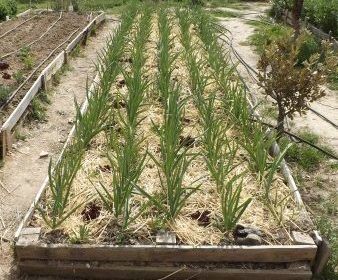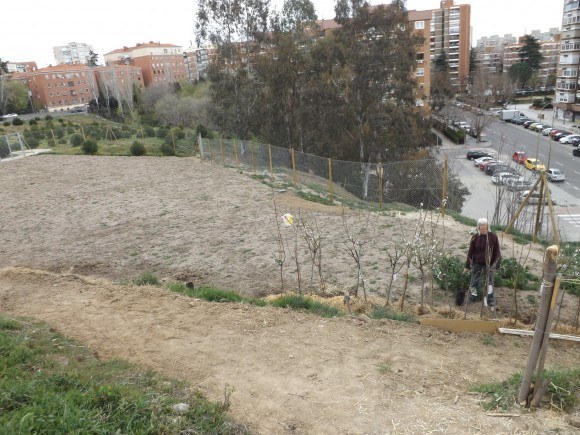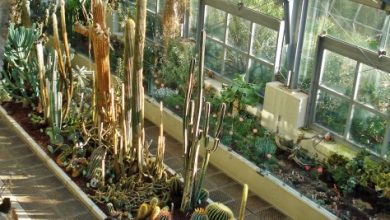Visit to the Batan Garden. A formidable urban garden

Very good to all Agrohuerters. Today I come to present the last orchard that my colleague Sandra and I have visited, the Batán orchard, located between Paseo de Extremadura and Calle Alverja, forming part of the orchards in the Latina district.

This orchard was born in 2012 through a neighborhood initiative that after a long struggle with the city council has ended up regularizing with this new regulation on urban orchards of the community of Madrid. It is currently part of the RedMad and they have one of those plots that the city council ceded a little while ago, for which they have a multitude of interesting projects reserved… Well, I am always going to focus on telling you how our visit was:
Visit to the Batan orchard
We went to the Batán orchard last March 15, since this group usually meets there both on Wednesdays and Sundays, I arrived a little before Sandra, as happened when I visited the barley field, but I quickly got to chat with Irene, one of those responsible for the orchard, about a multitude of topics and concerns.
The truth is that they are a very nice and open group, all the members knew beforehand that we were going to do the report that day, so no one was caught by surprise, as has happened to us on other occasions, and the treatment was very close and friendly. Despite being filming daily tasks as usual, I have already told you that not everyone liked this.
Due to the planting dates, we caught them harvesting part of the winter garden and planting part of the spring crop, the winter crop was mainly made up of broad beans, lettuce, kale, cabbage, Brussels sprouts, etc. Other terraces still had species to collect, such as those made up of vetch, titarro and wheat, which will later be dried to make green manure.
If I remember correctly in the old part of the orchard (the one that has been there since 2012) they have about 5 areas of terraces distributed in 5 groups based on the crop rotation that they propose each year, so they have a lot of work to do and more now with the new orchard part (the one granted by the city council in 2014). This new area is being studied very conscientiously by the members of the orchard and permaculture experts such as Lucho Iglesias.to turn it into an edible forest, they have already given very well received courses on this. We will talk about edible forests in another article because it is a very interesting topic, but if you want to whet your appetite, I will leave you with Lucho’s explanation of what edible forests are and while you’re at it, take a look at the blog of the fuller’s garden to find out more. plus its history year after year: Blog del Huerto de Batán
The goal of the garden in the future
As we have mentioned, the orchard now has a new extra space to plan and work on apart from the land that they had been managing, maintaining and caring for for 3 years, which is why their current objective in the short-medium term is to become more perennial. For this, different permacultural techniques will be followed, such as the sowing of perennial and perennial species (such as Saffron, strawberries, etc…) and leaving some permanent terraces by planting self-seeding species such as New Zealand spinach and Borage.
These techniques have the advantage of being able to have the same crop in a plot the following year, thus saving the new seed, the work of preparing the plot, etc. For the group of people who have an orchard, it is difficult to know how many members will follow, how many new additions they will have, etc. And in this regard, having a few terraces that you know will germinate year after year is a great help in difficult times. Also, why not say it, it will save them an important job a year with which all the members will be grateful and they will be a clear example of how to develop some permacultural techniques.

In conclusion, during the last year we have visited many orchards, some are famous for their location, others for their innovation, for their social work, others for their activities, etc. But the neighborhood gardens, the ones that are a bit far from the city center, are famous for their people and their friendliness, for managing against theft, for educating the children they visit on matters of sustainability and agriculture through specific crops for them, for transforming an abandoned lot into a place that is well worth visiting and giving the neighborhood a reason to be proud of the innovation and neighborhood support. Be careful, I am not saying that it is not like that in other orchards, but personally in these orchards they have transmitted it to me much more.
If you live in the area: Batán, Lucero, Aluche, Campamento, Alto de Extremadura etc… Do not hesitate to come and see them, lend a hand, touch the earth, learn about new crops and advise you on any topic that interests you related to orchards, etc.. They will receive you as one more.
We will return soon to see how the next crops are grown, thanks to its members, especially to Irene for telling us so many things and giving us so much information.
Greetings

![Photo of Capillary Irrigation: [Concept, Utility, Advantages and Disadvantages]](https://www.complete-gardening.com/wp-content/uploads/2022/08/capillary-irrigation-concept-utility-advantages-and-disadvantages-390x220.jpg)
![Photo of How to Plant Grama Step by Step: [Guide + Images]](https://www.complete-gardening.com/wp-content/uploads/2022/08/how-to-plant-grama-step-by-step-guide-images-390x220.jpg)

![Photo of Adiantum: [Cultivation, Substrate, Irrigation, Care, Pests and Diseases]](https://www.complete-gardening.com/wp-content/uploads/2022/08/adiantum-cultivation-substrate-irrigation-care-pests-and-diseases-390x220.jpg)